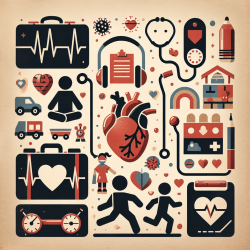The Hidden Impact of COVID-19 on Children's Physical Activity
The COVID-19 pandemic has disrupted lives globally, affecting not just daily routines but also the health of vulnerable populations. Among those significantly impacted are children with cardiac rhythm management devices (CRMDs), whose physical activity levels have been affected by pandemic-related restrictions. A recent study published in Pediatric Cardiology highlights these changes and underscores the importance of maintaining physical activity in this group.
Study Overview: A Closer Look at the Data
The study conducted a single-center, retrospective cohort analysis of 144 children under 19 years old with CRMDs. The data, collected from February 3, 2020, to June 30, 2020, revealed a significant decrease in physical activity during the pandemic's early months. Specifically, there was a 21% decline in activity from baseline levels during mid-March to early May, with activity levels only returning to pre-pandemic levels by June.
Key Findings and Implications
- Children with CRMDs experienced a sharp decline in physical activity at the onset of the pandemic.
- The decline was most pronounced during the early "shelter-in-place" orders, indicating the impact of social restrictions.
- Children with elevated BMI were less active than their peers with non-elevated BMI, highlighting the need for targeted interventions.
- No significant differences were found between activity levels of boys and girls or among residents of different states.
These findings are critical because decreased physical activity is linked to increased risks of cardiovascular and metabolic diseases, conditions that are particularly concerning for children with underlying heart conditions.
Actionable Insights for Practitioners
For practitioners working with children with CRMDs, these insights can guide interventions to mitigate the negative impacts of reduced physical activity. Here are some strategies:
- Encourage structured physical activities that can be done safely at home or in small, controlled environments.
- Collaborate with families to create personalized activity plans that consider the child's health status and local COVID-19 guidelines.
- Utilize telehealth to provide ongoing support and motivation for maintaining physical activity levels.
Looking Ahead: The Importance of Continued Research
While this study provides valuable insights, it also highlights the need for further research. Future studies could explore long-term impacts of the pandemic on physical activity and health outcomes in children with CRMDs. Additionally, investigating effective interventions to promote physical activity during public health crises could be beneficial.
To read the original research paper, please follow this link: Activity During the COVID-19 Pandemic in Children with Cardiac Rhythm Management Devices.










